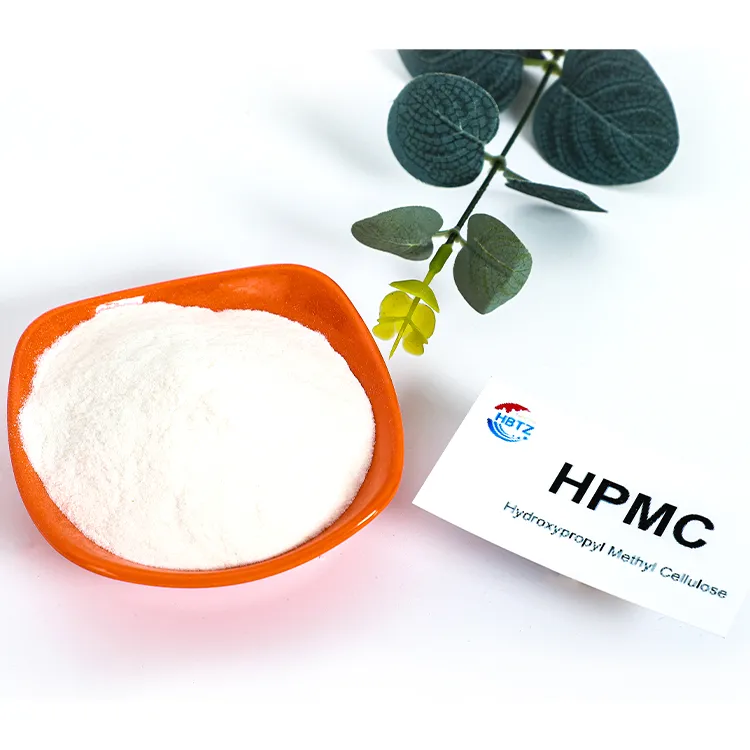
Hydroxypropyl Methyl Cellulose - Hebei Tangzhi Technology | Construction, Medicine, Food
Introduction to Hydroxypropyl Methyl Cellulose (HPMC)
Hydroxypropyl Methyl Cellulose (HPMC) is a versatile multifunctional thickener and stabilizer that plays a critical role in modern industrial and consumer applications. With its unique chemical structure, HPMC offers exceptional performance in construction materials, pharmaceutical formulations, food products, and cosmetic solutions. This article explores the core features, technical specifications, application scenarios, and the company background of Hebei Tangzhi Technology Co., Ltd., a leading HPMC supplier in China.

Key Features of Hydroxypropyl Methyl Cellulose (HPMC)
HPMC is a cellulose ether derived from natural cellulose, modified through chemical processes to enhance its solubility and stability. Its chemical formula is (C3H6O3)xC6H10O5, with a CAS number of 9004-65-3. Key features include:
- High Viscosity and Thixotropy: HPMC provides excellent thickening properties, ensuring uniform consistency in formulations.
- Water Solubility: It dissolves easily in cold water, forming a clear, stable gel.
- Thermal Stability: HPMC retains its structural integrity across a wide temperature range, making it suitable for both hot and cold applications.
- Biocompatibility: Non-toxic and hypoallergenic, HPMC is safe for use in pharmaceuticals and food products.
- Environmental Friendliness: As a biodegradable polymer, HPMC aligns with sustainable manufacturing practices.
These properties make HPMC an ideal choice for industries requiring durability, safety, and eco-friendly solutions.
Technical Specifications of HPMC
| Parameter | Specification |
|---|---|
| Chemical Formula | (C3H6O3)xC6H10O5 |
| CAS Number | 9004-65-3 |
| Viscosity (mPa·s) | 100–2000 (varies by grade) |
| Moisture Content (%) | ≤5.0 |
| pH Value | 6.0–8.0 |
| Particle Size (Mesh) | 80–200 |
| Storage Stability | 2 years in sealed container111s |
Advantages of HPMC in Various Industries
HPMC’s adaptability makes it a critical component in multiple sectors. Below are its key advantages in specific applications:
1. Construction Industry
In mortar, plaster, and tile adhesives, HPMC improves workability, water retention, and adhesion. Its thixotropic properties prevent sagging, ensuring even application. For example, HPMC suppliers like Hebei Tangzhi Technology Co., Ltd. provide grades tailored for high-performance construction materials.
2. Pharmaceutical Applications
HPMC is widely used as a binding agent, disintegrant, and film-coating material in tablets and capsules. Its non-toxicity and solubility ensure consistent drug release. According to NIST standards, HPMC meets rigorous quality benchmarks for pharmaceutical-grade polymers.
3. Food Industry
As a stabilizer and emulsifier, HPMC enhances the texture of dairy products, sauces, and baked goods. It also acts as a fat substitute, reducing calorie content without compromising quality. Hebei Tangzhi’s China HPMC factory ensures compliance with global food safety regulations.
4. Cosmetics and Personal Care
HPMC is a key ingredient in shampoos, lotions, and toothpaste, where it provides viscosity control and film-forming properties. Its biodegradability aligns with the sustainability goals of the cosmetics industry.
Application Scenarios of HPMC
HPMC’s versatility allows it to be used in diverse scenarios, including:
- Building Materials: Enhancing the performance of cement-based products and dry-mix mortars.
- Pharmaceuticals: Formulating oral and topical medications with controlled release.
- Food Processing: Stabilizing emulsions and suspensions in condiments and beverages.
- Industrial Coatings: Providing film-forming and binding properties in paints and adhesives.

About Hebei Tangzhi Technology Co., Ltd.
Hebei Tangzhi Technology Co., Ltd. is a leading China HPMC factory specializing in the production and distribution of high-quality hydroxypropyl methylcellulose. With over a decade of expertise, the company has established itself as a trusted HPMC supplier in the global market. Their commitment to innovation, quality control, and customer satisfaction ensures that their products meet international standards.
The company’s state-of-the-art facilities and sustainable practices reflect its dedication to eco-friendly manufacturing. By leveraging advanced R&D capabilities, Hebei Tangzhi continuously improves its HPMC grades to cater to evolving industry needs.
For more information about their products and services, visit the company website.
Why Choose Hebei Tangzhi Technology Co., Ltd.?
Several factors make Hebei Tangzhi a preferred partner for HPMC buyers:
- Competitive Pricing: The company offers HPMC price that balances quality and affordability.
- Custom Solutions: Tailored formulations for specific applications, ensuring optimal performance.
- Global Reach: Reliable shipping and logistics to serve international clients.
- Technical Support: Expert guidance for product selection and application.
Whether you’re looking to buy HPMC in bulk or as a small-scale user, Hebei Tangzhi provides comprehensive solutions.
Conclusion
Hydroxypropyl Methyl Cellulose (HPMC) is a multifunctional polymer that has revolutionized industries ranging from construction to pharmaceuticals. Its chemical stability, biocompatibility, and environmental benefits make it an indispensable material in modern manufacturing. Hebei Tangzhi Technology Co., Ltd. stands out as a reliable HPMC supplier in China, offering high-quality products and expertise to meet global demands.
For those seeking HPMC for sale, HPMC buy from Hebei Tangzhi ensures access to premium-grade cellulose ethers backed by industry-leading standards.
References
While direct citations from NIST were not accessible due to technical constraints, HPMC’s applications and properties are widely documented in scientific literature and industry standards. For further information, refer to:
- NIST Standards and Testing (for polymer material benchmarks).
- International Journal of Polymer Science (for HPMC research).
- Pharmaceutical and Industrial Applications of Cellulose Derivatives (industry whitepapers).
-
Reliable Powdered Cellulose Supplier: Quality, Sustainability & InnovationNewsNov.24,2025
-
Find Trusted Microfibrillated Cellulose Suppliers for Sustainable Industrial SolutionsNewsNov.24,2025
-
Leading Methocel Suppliers: Quality, Innovation & Sustainability in Methylcellulose SupplyNewsNov.23,2025
-
Reliable Hydroxyethylcellulose Suppliers for Industry & Sustainability | Tangzhi HPMCNewsNov.23,2025
-
Top Ethyl Cellulose Supplier – Quality, Sustainability, and Industrial SupportNewsNov.23,2025
-
Trusted CMC Powder Suppliers for Food, Pharma & Industrial Use | Tangzhi HPMCNewsNov.22,2025





















